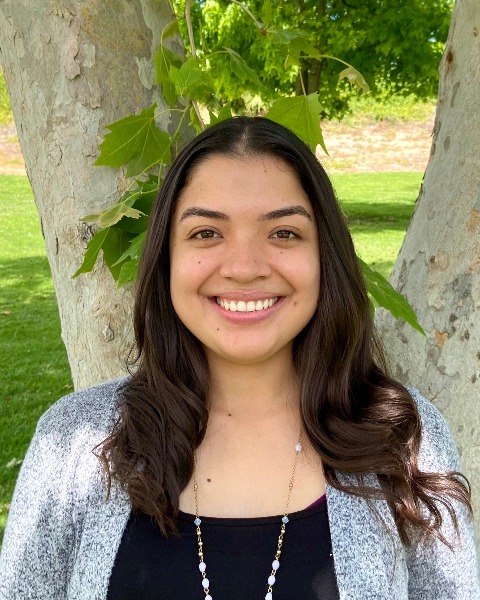Vestibular (V)
PP1505 - Comparing AC cVEMPs Between Narrow Band CE Chirp-Level Specific and Tone Burst Stimuli

Susana Hernandez
California State University, Los Angeles
Disclosure(s): No financial relationships to disclose
- CS
Chandan H. Suresh, PhD (he/him/his)
Assistant Professor
California State Univeristy- Los Angeles
Alhambra CA 91803, CaliforniaFinancial Disclosures: I do not have any relevant financial relationships with anything to disclose.
Non-Financial Disclosures: I do not have any relevant non-financial relationships with anything to disclose. 
Alaina Bassett, AuD, PhD (she/her/hers)
Assistant Professor
California State University, Los Angeles
Cal Sate Los Angeles
Seal Beach, CaliforniaFinancial Disclosures: I do not have any relevant financial relationships with anything to disclose.
Non-Financial Disclosures: Editorial Board Member, American Journal of Audiology
Review an article for the Journal of the American Academy of Audiology and Ear and Hearing- MH
Miwako Hisagi, AuD, PhD (she/her/hers)
Assistant Professor
California State University, Los Angeles
California State University, Los Angeles
Los Angeles, CaliforniaFinancial Disclosures: I do not have any relevant financial relationships with anything to disclose.
Non-Financial Disclosures: I do not have any relevant non-financial relationships with anything to disclose.
Lead Presenter(s)
Presenter(s)
Contributor(s)
Vestibular-evoked myogenic potential (VEMP) has become an integral part of the comprehensive vestibular evaluation. Stimulus type is one of the critical factors that influence VEMP response parameters. The current study compared the air conduction (AC) cervical VEMP (cVEMP) for Tone-Burst (TB) and Narrow-band (NB) CE-chirp level-specific (LS) stimuli at 500 and 1000 Hz. Results indicated that NB CE-Chirp LS presented with significantly shorter P1 and N1 latencies and larger N1-P1 amplitude when compared to TB for both 500Hz and 1000Hz. These findings suggest that NB CE-Chirp LS could be used as an alternative to TB for clinical cVEMP evaluations.
Summary:
Rationale/ Hypothesis: We hypothesized that the NB CE Chirp LS stimulus would result in shorter P1 and N1 latencies and larger P1-N1 amplitude than the TB stimulus for both 500Hz and 1000Hz. For the NB CE-Chirp LS stimulus, the onset of the stimulus is much earlier than the zero-point of averaging in the response waveform resulting in earlier latencies than the TB stimulus. The traveling wave compensation within the octave bandwidth centered at 500Hz and 1000Hz for NB CE-Chirp LS stimulus would result in improved neural synchronization and larger P1-N1 response amplitude than TB stimuli.
Purpose: VEMP has become an integral part of the comprehensive vestibular evaluation. cVEMP is the only non-invasive method to objectively assess the function of the saccule and the inferior portion of the vestibular nerve. cVEMPs are inhibitory potentials elicited in response to loud sounds, which can be recorded from the tonically contracted sternocleidomastoid (SCM) muscle. cVEMP is characterized by a biphasic response (positive wave (P1) ~13 milliseconds and a negative wave (N1) ~23 milliseconds). Clinically, AC TB of 500Hz presented at loud levels is used to measure cVEMP because of the robustness of P1-N1 amplitude. Reports of a higher incidence of absent cVEMP among older healthy individuals (Piker et al., 2015) and individuals with loud noise exposure history (Kumar et al., 2010) beg to investigate the potential benefits of measuring cVEMPs using novel stimuli such as chirp family stimulus. Only a handful of studies have compared the potential benefits of the NB CE Chirps- LS over TB for measuring cVEMP. The available studies report ambiguous findings. The current study compared the AC cVEMP for TB and NB CE-chirp LS stimuli at 500 and 1000 Hz.
Methods: The study recruited 15 adults (9 female) with no history of neurologic disease, chronic noise exposure, vestibular disorders, and conductive hearing loss. A two-channel recording montage was utilized- the belly of the right and left SCM (non-inverting electrode), upper sternum (inverting electrode), and mid-forehead (ground electrode). During recording, participants turned their head to the contralateral shoulder and received verbal feedback to maintain steady SCM contraction. Two tracings of AC cVEMP was measured for randomly presented TB and NB CE Chirp LS stimuli at 500Hz and 1000Hz presented at 95dBnHL. The response measurement was alternated between right and left SCM to prevent muscle tiring. Minimum 3 minutes break was provided between each stimulation. The cVEMP response metrics such as P1, N1 latency, P1-N1 peak-to-peak amplitude, and interaural asymmetry ratio (IAR) are considered for analysis.
Results: This study revealed statistically significant earlier P1 and N1 latencies and larger P1-N1 peak-to-peak amplitude for NB CE-Chirp LS compared to TB stimulus at 500 and 1000 Hz. There were no statistically significant differences in IAR across NB CE-Chirp LS and TB stimulus.
Conclusion: NB CE-Chirp LS could be used as a possible alternative to TB for clinical cVEMP evaluations. Further investigation is needed to evaluate the potential benefits of chirp family stimulus in older healthy individuals and patients with vestibular disorders.Learning Objectives:
